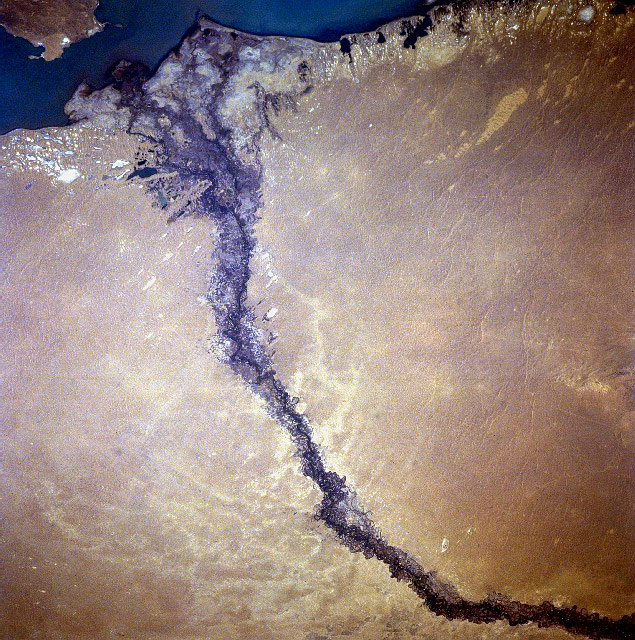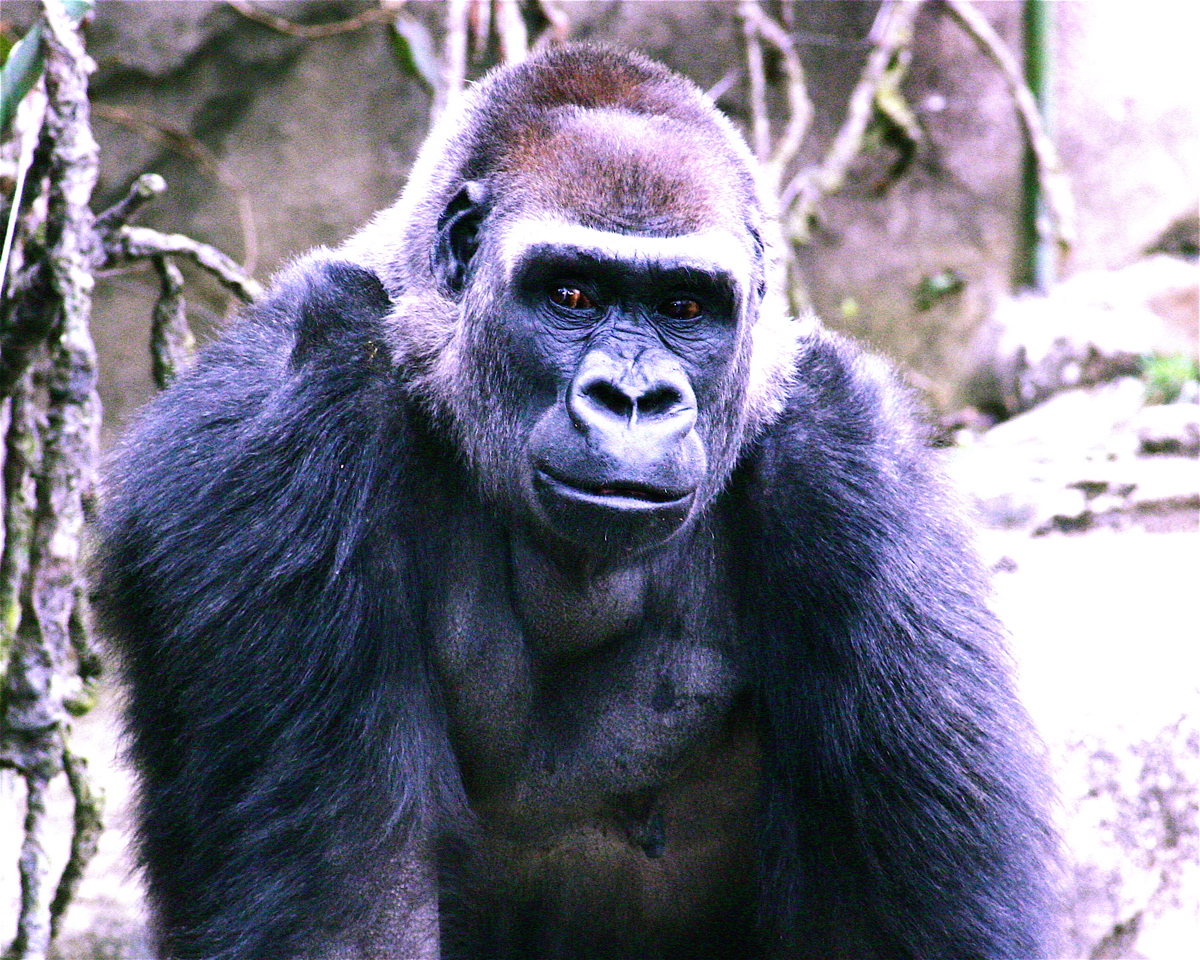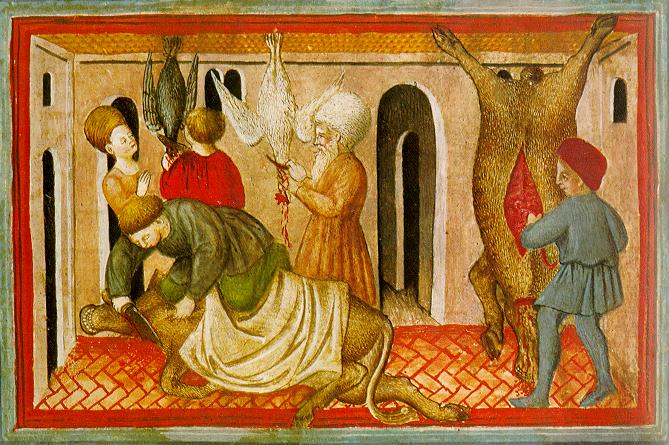|
Goitered Gazelle
The goitered gazelle (''Gazella subgutturosa'') or black-tailed gazelle is a gazelle native to Turkey, Georgia, Azerbaijan, Iran, parts of Iraq and Pakistan, Afghanistan, Tajikistan, Kyrgyzstan, Uzbekistan, Turkmenistan, Kazakhstan and in northwestern China and Mongolia. The specific name, meaning "full below the throat", refers to the male having an enlargement of the neck and throat during the mating season. Distribution and habitat The goitered gazelle inhabits sands and gravel plains and limestone plateau. Large herds were also present in the Near East. Some 6,000 years ago, they were captured and killed with the help of desert kites. Rock art found in Jordan suggests that it was slaughtered ritually. Behaviour and ecology Its mating behaviour is polygynous and usually occurs in the early winter. It runs at high speed, without the leaping, bounding gait seen in other gazelle species. Throughout much of its range, the goitered gazelle migrates seasonally. Herds cov ... [...More Info...] [...Related Items...] OR: [Wikipedia] [Google] [Baidu] |
Korkeasaari Zoo
Korkeasaari Zoo (), also known as Helsinki Zoo, is the largest zoo in Finland, located in Helsinki. The zoo was first opened in 1889. Today it is operated by a Nonprofit organization, nonprofit foundation. The zoo is among the most popular places among visitors in Helsinki. A ferry and water buses take visitors to the island of Korkeasaari, where the Zoo is located, during summertime from the Market Square, Helsinki, Market Square. The zoo is also connected to the mainland via a bridge to the Helsinki district of Mustikkamaa, where there is access to the zoo all year round. Conservation work Korkeasaari Zoo is a member of the European Association of Zoos and Aquaria (EAZA). The zoo works with other modern zoos to maintain a healthy and viable zoo population with EAZA Ex-situ Programme and takes part in Species reintroduction, reintroduction programmes. Korkeasaari Zoo holds the European studbook for markhors, Finnish forest reindeer, European forest reindeers and snowy owls an ... [...More Info...] [...Related Items...] OR: [Wikipedia] [Google] [Baidu] |
Uzbekistan
, image_flag = Flag of Uzbekistan.svg , image_coat = Emblem of Uzbekistan.svg , symbol_type = Emblem of Uzbekistan, Emblem , national_anthem = "State Anthem of Uzbekistan, State Anthem of the Republic of Uzbekistan" , image_map = File:Uzbekistan (centered orthographic projection).svg , map_caption = Location of Uzbekistan (green) , capital = Tashkent , coordinates = , largest_city = capital , official_languages = Uzbek language, Uzbek , languages_type = Writing system, Official script , languages = Latin Script, Latin , recognized_languages = Karakalpak language, Karakalpak , ethnic_groups = , ethnic_groups_ref = , ethnic_groups_year = 2021 , religion_ref = , religion_year = 2020 , religion = , demonym = Uzbeks, Uzbek • Demographics of Uzbekistan, Uzbekistani , ... [...More Info...] [...Related Items...] OR: [Wikipedia] [Google] [Baidu] |
Lake Balkash
Lake Balkhash, also spelt Lake Balqash (, , ), is a lake in southeastern Kazakhstan, one of the largest lakes in Asia and the 15th largest in the world. It is located in the eastern part of Central Asia and sits in the Balkhash-Alakol Basin, an endorheic (closed) basin. The basin drains seven rivers, the primary of which is the Ili, bringing most of the riparian inflow; others, such as the Karatal, bring surface and subsurface flow. The Ili is fed by precipitation, largely vernal snowmelt, from the mountains of China's Xinjiang region. The lake currently covers about . However, like the Aral Sea, it is shrinking due to diversion and extraction of water from its feeders. The lake has a narrow, quite central, strait. The lake's western part is fresh water and its eastern half is saline. The eastern part is on average 1.7 times deeper than the west. The largest shore city is named Balkhash and has about 66,000 inhabitants. Main local economic activities include mining, ore p ... [...More Info...] [...Related Items...] OR: [Wikipedia] [Google] [Baidu] |
Buzachi
The Buzachi Peninsula (, ''Bozaşy tübegı''; ) is a peninsula located in western Kazakhstan. It borders on the Mangyshlak Bay of the Caspian Sea in the west and with the Mangyshlak Peninsula in the southwest. The Dead Kultuk lies to the northeast and the narrow Kaydak Inlet forms its eastern limit. Durneva Island lies to the north and the Tyuleniy Archipelago lies off the western shores of the peninsula. Administratively the Buzachi Peninsula is part of Kazakhstan's Mangystau Province. Currently it is a new oil exploration area. This peninsula is a vast low-lying depression with salt marshes and salt lakes. Parts of it lie between 20 and 30 m below sea level, lower than the Caspian. The area provides an important habitat for thousands of Goitered Gazelle The goitered gazelle (''Gazella subgutturosa'') or black-tailed gazelle is a gazelle native to Turkey, Georgia, Azerbaijan, Iran, parts of Iraq and Pakistan, Afghanistan, Tajikistan, Kyrgyzstan, Uzbekistan, Turkmenist ... [...More Info...] [...Related Items...] OR: [Wikipedia] [Google] [Baidu] |
Gazella Marica
The Arabian sand gazelle (''Gazella marica'') or reem () is a species of gazelle native to the Arabian and Syrian Deserts. Distribution and conservation Today it survives in the wild in small, isolated populations in Saudi Arabia, the United Arab Emirates, Oman, and southeastern Turkey. Small numbers may also be present in Kuwait, Iraq, Jordan, and Syria. The total population of wild sand gazelles is thought to be less than 3,000. Significantly more are held in captivity, reserves, or breeding programs, perhaps more than 100,000. Taxonomy Until recently, the sand gazelle was considered a subspecies of the goitered gazelle (''Gazella subgutturosa''), as ''Gazella subgutturosa marica''. A 2010 genetic study established that it was a distinct lineage, and it is now considered a separate species. Further genetic analysis reported in 2012 found that the sand gazelle was closely related to two North African gazelles, Cuvier's gazelle Cuvier's gazelle (''Gazella cuvieri'') is a spe ... [...More Info...] [...Related Items...] OR: [Wikipedia] [Google] [Baidu] |
Monotypic
In biology, a monotypic taxon is a taxonomic group (taxon) that contains only one immediately subordinate taxon. A monotypic species is one that does not include subspecies or smaller, infraspecific taxa. In the case of genera, the term "unispecific" or "monospecific" is sometimes preferred. In botanical nomenclature, a monotypic genus is a genus in the special case where a genus and a single species are simultaneously described. Theoretical implications Monotypic taxa present several important theoretical challenges in biological classification. One key issue is known as "Gregg's Paradox": if a single species is the only member of multiple hierarchical levels (for example, being the only species in its genus, which is the only genus in its family), then each level needs a distinct definition to maintain logical structure. Otherwise, the different taxonomic ranks become effectively identical, which creates problems for organizing biological diversity in a hierarchical syste ... [...More Info...] [...Related Items...] OR: [Wikipedia] [Google] [Baidu] |
Animal Migration
Animal migration is the relatively long-distance movement of individual animals, usually on a seasonal basis. It is the most common form of migration in ecology. It is found in all major animal groups, including birds, mammals, fish, reptiles, amphibians, insects, and crustaceans. The cause of migration may be local climate, local availability of food, the season of the year or for mating. To be counted as a true migration, and not just a local dispersal or irruption, the movement of the animals should be an annual or seasonal occurrence, or a major habitat change as part of their life. An annual event could include Northern Hemisphere birds migrating south for the winter, or wildebeest migrating annually for seasonal grazing. A major habitat change could include young Atlantic salmon or sea lamprey leaving the river of their birth when they have reached a few inches in size. Some traditional forms of human migration fit this pattern. Migrations can be studied using tradition ... [...More Info...] [...Related Items...] OR: [Wikipedia] [Google] [Baidu] |
Polygyny In Animals
Polygyny (; from Neo-Greek , ) is a mating system in which one male lives and mates with multiple females but each female only mates with a single male. Systems where several females mate with several males are defined either as promiscuity or polygynandry. Lek mating is frequently regarded as a form of polygyny, because one male mates with many females, but lek-based mating systems differ in that the male has no attachment to the females with whom he mates, and that mating females lack attachment to one another.Clutton-Brock T.H. (1989). ‘Review lecture: mammalian mating systems.' ''Proceedings of the Royal Society of London''. Series B, Biological Sciences 236: 339–372. Polygyny is typical of one-male, multi-female groupsBoyd, R., & Silk, J. B. (2009). How Humans Evolved (preferably the downloadable pdf version): WW Norton & Company, New York. and can be found in many species including: elephant seal, spotted hyena, gorilla, red-winged prinia, house wren, hamadryas bab ... [...More Info...] [...Related Items...] OR: [Wikipedia] [Google] [Baidu] |
Ritual Slaughter
Ritual slaughter is the practice of slaughtering livestock for meat in the context of a ritual. Ritual slaughter involves a prescribed practice of slaughtering an animal for food production purposes. Ritual slaughter as a mandatory practice of slaughter for food production is practiced by some Muslim and Jewish communities. Both communities have similar religious philosophies in this regard. American scientist Temple Grandin has researched ritual slaughter practices and says that abattoirs which use recommended practices cause livestock little pain; she calls the UK debate over halal slaughterhouses misguided, and suggests that inhumane treatment of animals happens in poorly run slaughterhouses regardless of their halal status. The Farm Animal Welfare Committee (FAWC), which advises British government on how to avoid cruelty to livestock, on the other hand, says the way Jewish kosher and Muslim halal meat is produced causes severe suffering to animals. Ritual slaughter is in ma ... [...More Info...] [...Related Items...] OR: [Wikipedia] [Google] [Baidu] |
Desert Kite
Desert kites () are dry stone wall structures found in Southwest Asia (Middle East, but also North Africa, Central Asia and Arabia), which were first discovered from the air during the 1920s. There are over 6,000 known desert kites, with sizes ranging from less than a hundred metres to several kilometres. They typically have a kite shape formed by two convergent "antennae" that run towards an enclosure, all formed by walls of dry stone less than one metre high, but variations exist. Little is known about their ages, but the few dated examples appear to span the entire Holocene. The majority view on their purpose is that they were used as traps for hunting game animals such as gazelles, which were driven into the kites and hunted there. Appearance Desert kites are stone structures with a convergent shape, composed of linear piles of stones. The structures have lengths ranging from less than a hundred metres to several kilometres and heights of less than one metre, even acco ... [...More Info...] [...Related Items...] OR: [Wikipedia] [Google] [Baidu] |
Limestone
Limestone is a type of carbonate rock, carbonate sedimentary rock which is the main source of the material Lime (material), lime. It is composed mostly of the minerals calcite and aragonite, which are different Polymorphism (materials science), crystal forms of calcium carbonate . Limestone forms when these minerals Precipitation (chemistry), precipitate out of water containing dissolved calcium. This can take place through both biological and nonbiological processes, though biological processes, such as the accumulation of corals and shells in the sea, have likely been more important for the last 540 million years. Limestone often contains fossils which provide scientists with information on ancient environments and on the evolution of life. About 20% to 25% of sedimentary rock is carbonate rock, and most of this is limestone. The remaining carbonate rock is mostly Dolomite (rock), dolomite, a closely related rock, which contains a high percentage of the mineral Dolomite (mine ... [...More Info...] [...Related Items...] OR: [Wikipedia] [Google] [Baidu] |
Mongolia
Mongolia is a landlocked country in East Asia, bordered by Russia to the north and China to the south and southeast. It covers an area of , with a population of 3.5 million, making it the world's List of countries and dependencies by population density, most sparsely populated sovereign state. Mongolia is the world's largest landlocked country that does not border an Endorheic basin, inland sea, and much of its area is covered by grassy steppe, with mountains to the north and west and the Gobi Desert to the south. Ulaanbaatar, the capital and List of cities in Mongolia, largest city, is home to roughly half of the country's population. The territory of modern-day Mongolia has been ruled by various nomadic empires, including the Xiongnu, the Xianbei, the Rouran, the First Turkic Khaganate, the Second Turkic Khaganate, the Uyghur Khaganate and others. In 1206, Genghis Khan founded the Mongol Empire, which became the largest List of largest empires, contiguous land empire i ... [...More Info...] [...Related Items...] OR: [Wikipedia] [Google] [Baidu] |




